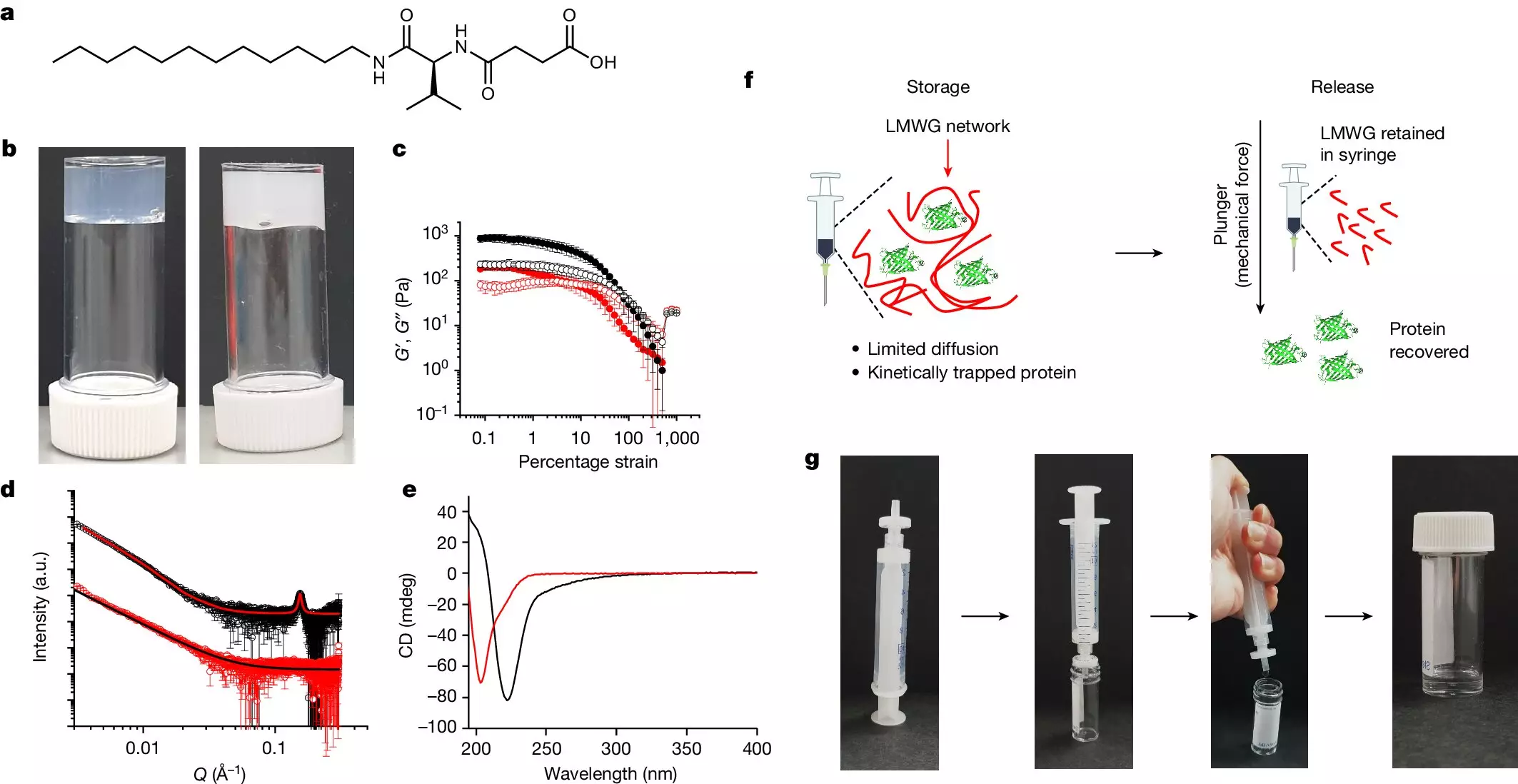In a remarkable leap forward for the medical field, a team of scientists has unveiled a groundbreaking method for the storage and distribution of vital protein therapeutics—one that operates effectively without reliance on refrigeration. This research, recently published in the eminent journal *Nature*, could transform healthcare delivery, particularly in resource-limited settings. By eliminating the constraints of cold storage, this innovation has the potential to enhance the accessibility of essential protein-based medications, particularly in developing nations suffering from inadequate healthcare infrastructure.
The Science Behind the Breakthrough
The cornerstone of this advancement is a new type of hydrogel—a gel-like substance predominantly comprised of water—that stabilizes proteins even at elevated temperatures of up to 50°C. Developed through a collaborative effort from researchers at several prominent universities including Manchester, Glasgow, and Warwick, the hydrogel acts as a protective repository for proteins, safeguarding their structural integrity and therapeutic function. The hydrogel’s unique architecture involves low molecular weight gelators (LMWGs) which form a lattice of rigid fibers. When proteins are introduced into this environment, they are ensconced in a manner that prevents aggregation—a major factor that can inhibit their efficacy.
This technique stands in stark contrast to conventional storage methods that frequently rely on refrigeration, a process that not only demands significant energy but also complicates the broader distribution of these lifesaving drugs in regions that may lack robust cold chain infrastructure. The implications of this technology extend far beyond mere convenience; they echo the urgent need for sustainable solutions in global health.
Impact on Global Health Disparities
One of the most compelling facets of this research is its ability to narrow the health equity gap. The capacity to maintain protein drugs at room temperature means that health systems in developing countries are no longer tethered to the logistical challenges of cold storage. By utilizing the advanced hydrogel, medical practitioners can ensure that essential treatments are delivered efficiently and effectively to underserved populations. This is particularly pertinent for patient groups that rely on protein therapeutics, such as insulin for diabetes management, monoclonal antibodies for cancer treatment, and various enzymes crucial in biotechnological applications.
The global landscape of health crises—from the COVID-19 pandemic to an epidemic of non-communicable diseases—demands innovative solutions that transcend traditional methodologies. Technologies like this hydrogel not only respond to a pressing need but also embody a vision for future healthcare accessibility.
The Logistics of Protein Delivery
This innovative hydrogel’s mechanism allows for a simplified logistics process when delivering protein therapeutics. In testing, researchers demonstrated that proteins stored in the hydrogel safely endured a simulated transit scenario. The gel not only protected the proteins from environmental stressors but also ensured that the integrity of the therapeutic compounds remained intact. This innovative aspect of the hydrogel signifies a shift towards more resilient healthcare supply chains.
The researchers even conducted experiments that involved post transportation of hydrogel-encapsulated proteins for two days, revealing that both the structural integrity of the gel and the biological activity of the proteins were preserved. Such assurances are crucial for stakeholders in the pharmaceutical industry as they seek reliable methods for distributing treatments globally.
The Role of Chemistry in Innovation
Professor Matthew Gibson, one of the study’s leading authors, emphasized the breakthrough nature of their findings. By circumventing the need for additives often used in drug formulations—due to their impact on both efficacy and safety—the hydrogel offers a clean solution. This clean state is particularly vital as the scientific community continues to grapple with concerns regarding drug purity and patient safety.
The mechanics of this technology represent a sophisticated integration of bioengineering and chemistry. The hydrogel’s ability to release proteins seamlessly when subjected to pressure is another facet that enhances its practical utility. Standard syringes equipped with this hydrogel can deliver precise dosages of protein therapeutics without necessitating complicated apparatus or procedures.
Future Directions and Opportunities
The immediate horizon for this research encompasses not only further validation of the hydrogel’s effectiveness across a broader range of protein therapeutics but also exploration into commercial applications. Securing patents for this transformative technology will likely attract interest from pharmaceutical companies eager to pioneer the next generation of drug distribution methods. The potential for kickstarting a new era in the handling of protein drugs is palpable, offering hope for a future in which effective treatments are accessible to all, regardless of geography.
As the implications of this advancement continue to unfold, the convergence of science, healthcare, and social equity looms large. The researchers’ commitment to developing this technology could well herald a renaissance in the field, propelling medical science into a new age where barriers to health are diminished and effective therapies are just a flip of a plunger away.

